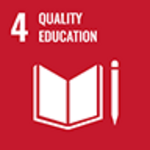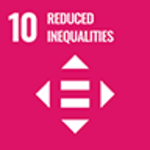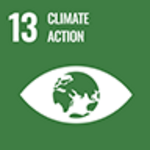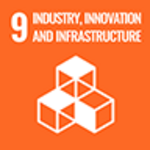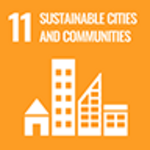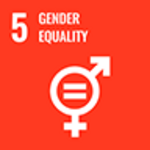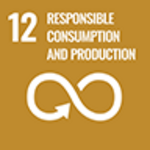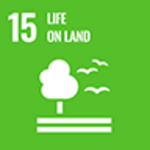
Kouchi: Recently, many people have pointed out issues in education, such as black club activities, educational disparity, and in the 1970s, competition for entrance exams and academic society, and people who are speaking in the media are speaking from the perspective of educational sociology. This is us. On the other hand, pedagogy tends to explore ideal education, curriculum, and teachers, and pursues the ideal of ``what education should be.'' In contrast, educational sociology considers the discrepancy between the ideal and the real society as a problem, considers ``what is happening around education,'' and clarifies the structure of the problem in accordance with the real society. Masu.

Professor Toru Ouchi
Professor Toru Kouchi has been engaged in research in the field of educational sociology for over 40 years, and has faced social inequality. He retired from Hokkaido University in March 2021 and transferred to Sapporo International University from 2021. Once again, he spoke about social issues from the perspective of educational sociology.
The complex relationship between education and society
What kind of problems did Professor Kouchi focus on in his research?
Ouchi: I changed the theme several times, but when I look back, I feel that there is one thing that remains the same. The point is that it targets "people who tend to be disadvantaged in society." I feel that the basis of my research has always been the intertwining of social disparities and educational inequality. Specifically, we investigate educational issues for people who are socially disadvantaged, such as research on rural societies, the problem of Japanese-Brazilian children not attending school, and the current situation of the Ainu people. I was researching.
social disparities and educational inequality. What is the relationship between these two?
Kouchi: Education includes not only school education, but also a wide variety of education such as education at home, self-study, and learning in daily life. Society also refers to various scales such as families, classes, schools, and local communities. The two can be said to have an ambiguous relationship. From the perspective of social disparity, being in a socially disadvantaged position places restrictions on the education that a person can receive. However, on the other hand, it also motivates people to receive education in order to reverse their disadvantageous position through education.
On the other hand, when it comes to education, there are aspects of education that were originally created to correct social disparities. However, in recent years, it has been pointed out that education is widening social disparities.
They have both positive and negative influences on each other, so it's very complex.
Ouchi: It's an ambiguous relationship. Social inequality, disparity, and inequality are not all bad things, depending on how you look at them. Because there are inequalities and disparities, education can be a source of energy to change our position. If everyone was in the same position, there would be no effort. In China, they say that no matter how poor you are born into a family, you can change your life if you get into a good university and get a good academic background, and universities are also looking at how international students study. I don't think the Japanese people today can compete with that at all.
Social inequalities and disparities have positive and negative aspects, and education can originally play a role in correcting social inequalities. No matter what circumstances you are born into, you can change them through education. Even if you are a child of a wealthy family, your life will change if you are lazy. Considering this ambiguity, it is important to look at the situation from a bird's-eye view without relying on one-sided viewpoints.

At Sapporo International University campus
First of all, when you say "education," it's much broader than just school education.
Kouchi: The easiest way to understand education is to imagine school education. There are people who teach and people who learn. It is easy to think of this as education, but from our perspective, it is a very narrow scope. Based on the organization of a sociology of education professor, if education is viewed from two perspectives: the will to teach and the will to learn, then the teaching style of a typical school is consistent with these two perspectives.
In contrast, although there is a will to educate, there is no will to learn. For example, we provide correctional education for people who have committed a crime and gone to a juvenile detention center. I have no desire to learn, but I have to teach. On the other hand, there are cases where there is a desire to learn but no desire to teach, in which case the only option is to learn by yourself. In a broad sense, these learning experiences can also be considered as education.
In other words, there may be phenomena that can be called education even though there is no will to learn or to educate. A typical example of this is a TV quiz show, in which the creators of the TV program are simply trying to provide something entertaining and enjoyable for everyone to watch in order to increase viewer ratings. There is no intention to do so. The viewers are just enjoying the quiz show and have no desire to learn. In this way, people may not have the will to educate or learn, but they may gain new knowledge through the viewing experience, and this can be called education in the form of influence. I think it can be said that unintentional education includes two aspects: learning and influence.
Settlement activities were a major trigger
How did you become interested in socially disadvantaged people?
Kouchi: I think the settlement activities I did as a club activity when I was a student at Hokkaido University were a big factor. Settlement activities are activities in which people go to the areas where people live in poverty and hardship to serve them. I also went to an area where many low-income people lived every week to play with children and teach them about their studies. During that time, I witnessed the children I was taking care of end up in juvenile detention centers or die from illness, and learned the reality of society. Even now, there are many people who are disadvantaged by society. It is not a simple problem that can be solved simply by protecting those people. The first thing that taught me this was settlement activities when I was an undergraduate.

With children during settlement activities (around 1976)
Research to understand the actual situation of socially disadvantaged people
What kind of specific research have you conducted?
Kouchi: Ever since I was a student School of Education, I have tried not only to look at abstract theories, but also to investigate concrete people's lives and see their reality and changes. The first field I worked on, even during my student days, was rural sociology, and under the research theme of ``regional structure in rural areas,'' I went to many different regions to conduct research.
Since then, until recently, I have been researching the problems faced by Japanese Brazilians and Ainu indigenous peoples, as I mentioned earlier. All of them are people who are socially disadvantaged due to their ethnicity. Research on the Ainu people began with the establishment of the Hokkaido University Ainu and Indigenous Research Center.
How was the actual research conducted?
Ouchi: Basically, we spent a considerable amount of time conducting social research through questionnaires and interviews. For example, in our research with Japanese-Brazilians, we visited schools where Brazilian children attend and shops run by Brazilians and listened to their stories. At the same time, we also spoke to the local Japanese people who are hosting the Brazilians. Through our research, we will learn how the people who live there live their lives and explore the structure of the educational problems faced by Japanese Brazilians.
Even if the region or subject changes, research has always remained consistent.
Ouchi: Even if the same compulsory education is provided throughout the country, and even if children are exposed to the same quality of information through the mass media, each individual's learning level is influenced by their region, lifestyle, parents' educational background, economic situation, etc. . Even when these children grow up and become parents, the education they receive does not allow them to escape from poverty, and we see a structure that is repeated to the next generation. Looking back, I can say that I have pursued the ideal form of education that overcomes the inequalities caused by social structures through both theoretical and empirical research.

In order to reach a solution to the problem
Issues of social inequality and education are deeply connected to the SDGs.
Ouchi: Although I did not choose my research topic with SDGs in mind, there are several SDGs that are related to my theme, such as ethnicity, poverty, inequality, and gender. It is important to deeply study each issue, but in reality, people who are disadvantaged in society have multiple problems that overlap and are intertwined. Imagine being a poor woman, living in a rural area. We believe that thinking and discussing the complex structure and cause-and-effect relationships is more effective in solving problems than delving into each problem individually.
It seems difficult to fundamentally solve poverty and inequality.
Ouchi: Much of why this problem occurs is known through the accumulation of research to date. However, the current situation is that it still has not been resolved. What future research will need to do is not only clarify the problem, but also consider ways to solve it. How can we make the problem more widely known and create a system where everyone can work together to solve it? I hope that the next generation of researchers will tackle this issue head-on.

Interview stories ~ Hokkaido University's comprehensive entrance examination system ~
Hokkaido University has introduced an entrance examination system called the comprehensive entrance examination since 2011. Students who pass the comprehensive entrance exam will enroll in either the liberal arts or science majors, and will not be affiliated with any faculty during their first year at university. During the first year, students learn the general knowledge and basics required for any faculty, and then choose a faculty when they move on to their second year.
Professor Toru Ouchi was one of the people who played a central role in designing this system. Regarding the current system, ``You can decide on your specialty after seeing what fields and research are available in your first year, so you can reduce mismatches. They have all come to Hokkaido University since then, so I'm sure the students will be very inspired by each other.''
[Planning/Production]
Hokkaido University URA Station / SDGs Initiative Office (Planning)
Space Time Co., Ltd. Keiko Nakamura (Director/Editing/Writing) Kyohei Hosoya (Writing)
PRAG Kenta Nakamura (Photography)

Toru Kouchi Professor
Affiliation: Professor, Department of Contemporary Culture School of Humanities and Human Sciences Sapporo International University
Professor Emeritus of Educational Sociology Faculty of Education Hokkaido University
Sociology, educational sociology, community sociology
I was born into a poor family and used scholarships all the way from high school to graduate school. This experience may also be the background for researching the relationship between social inequality and education. I feel that it is important to have a system that allows students to continue learning even in difficult environments.


















